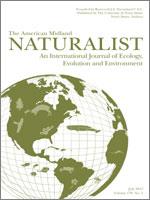Although extensively studied in upland landscapes, little has been published regarding Eastern Wild Turkey (Meleagris gallopavo silvestris) nest site selection and reproductive ecology in bottomland systems. Wild Turkeys in these systems face unique conditions, such as persistent flooding, so facets of nesting ecology observed in primarily upland landscapes may not apply directly to Wild Turkeys in bottomland systems. We studied nesting ecology of radio-marked female Wild Turkeys during six nesting seasons (2002–2004, 2008–2010) in a bottomland hardwood system in south-central Louisiana. We studied landscape level nest site selection at three spatial scales (200 m, 400 m, and 800 m) and found Wild Turkeys selected nesting locations in areas that offered greater proportions of nonflooded bottomland forests and higher forest edge density than generally available across the study site at all scales. At smaller spatial scales, forest openings were also important to nest site selection, while at large scales, nest location was negatively related to landscape diversity. All nests were located in dry higher elevation forests (n = 35) or forest openings (n = 6). These habitats were likely selected because they offered protection from flood-related nest mortality and access to brood-rearing habitat. At the micro habitat scale, ground level cover was important to nest site selection, and likely provided protection from ground predators. Nests were often associated with small recent breaks in the canopy, presumably as a response to the resulting growth in understory cover. Wild Turkeys avoided nesting in managed forest stands with large areas of open canopy, likely because rapid successional growth in these areas made understory growth too dense. Nest predation was the greatest cause of nest failure (55%). Nesting rates (60%) and female success rates (24%) were among the lowest reported for the species, whereas nest success (39%) was near the range wide average. Reproductive performance may have been hampered by a scarcity of quality nesting habitat due to flooding and generally sparse understory vegetation, which left nests vulnerable to predation. Despite low nesting rates and female success, there was no evidence of a declining population on our study area. We suspect this may be a result of either high poult survival due to high quality brood-rearing habitat or because high female survival rates allow individual birds multiple chances to successfully reproduce.
How to translate text using browser tools
1 July 2013
Nesting Ecology of Wild Turkeys in a Bottomland Hardwood Forest
Michael E. Byrne
ACCESS THE FULL ARTICLE
It is not available for individual sale.
This article is only available to subscribers.
It is not available for individual sale.
It is not available for individual sale.

The American Midland Naturalist
Vol. 170 • No. 1
July 2013
Vol. 170 • No. 1
July 2013




